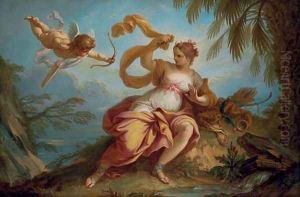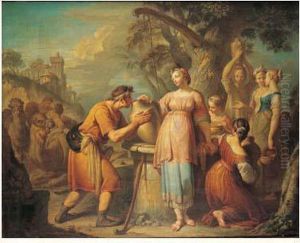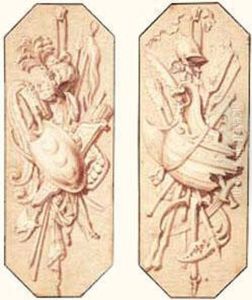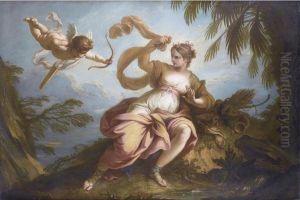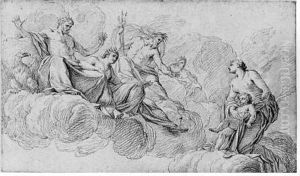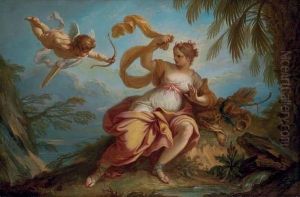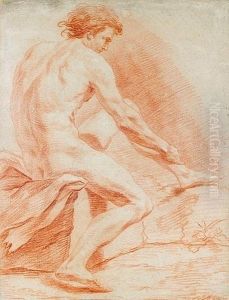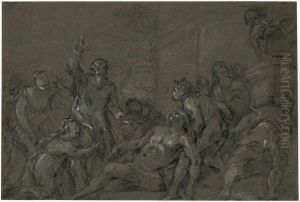Jean Dumont (le Romain) Paintings
Jean Dumont, also known as Jean Dumont Le Romain due to his extensive stay in Italy, was a French historical painter and engraver born in 1700. Not much is known about his early life before his artistic career. However, it is known that he showed a profound interest in the arts from a young age and received training in Paris, which was the center of artistic development in France during that period.
Dumont's work is characterized by the classical influences that he absorbed during his time in Rome, where he spent a significant part of his career. This led to his nickname 'Le Romain'. His time in Rome was crucial in shaping his style, which incorporated elements of the grandeur and harmony found in ancient Roman and Renaissance art. He became known for his historical paintings, which often depicted scenes from ancient history and mythology with a dramatic flair and attention to detail.
Throughout his career, Dumont developed a reputation for his engravings as well. His engravings were celebrated for their precision and clarity, and they played a significant role in disseminating the works of other artists. In the 18th century, engravings were an essential means of reproducing artworks, which allowed for the wide distribution of images and contributed to the education of both artists and the general public.
Jean Dumont Le Romain's influence extended beyond his own works. He was an active member of the artistic community and contributed to the development of the arts in France. His dedication to historical accuracy and classical ideals was in line with the French Academy's values at the time. Dumont's legacy is preserved through his paintings and engravings, which continue to be studied for their technical skill and adherence to classical principles.
Jean Dumont Le Romain passed away in 1775, leaving behind a body of work that continues to be appreciated for its representation of 18th-century French art and its classical influences. His artistic contributions were part of the broader European movement towards neoclassicism that gained momentum towards the end of his life and continued into the following century.
